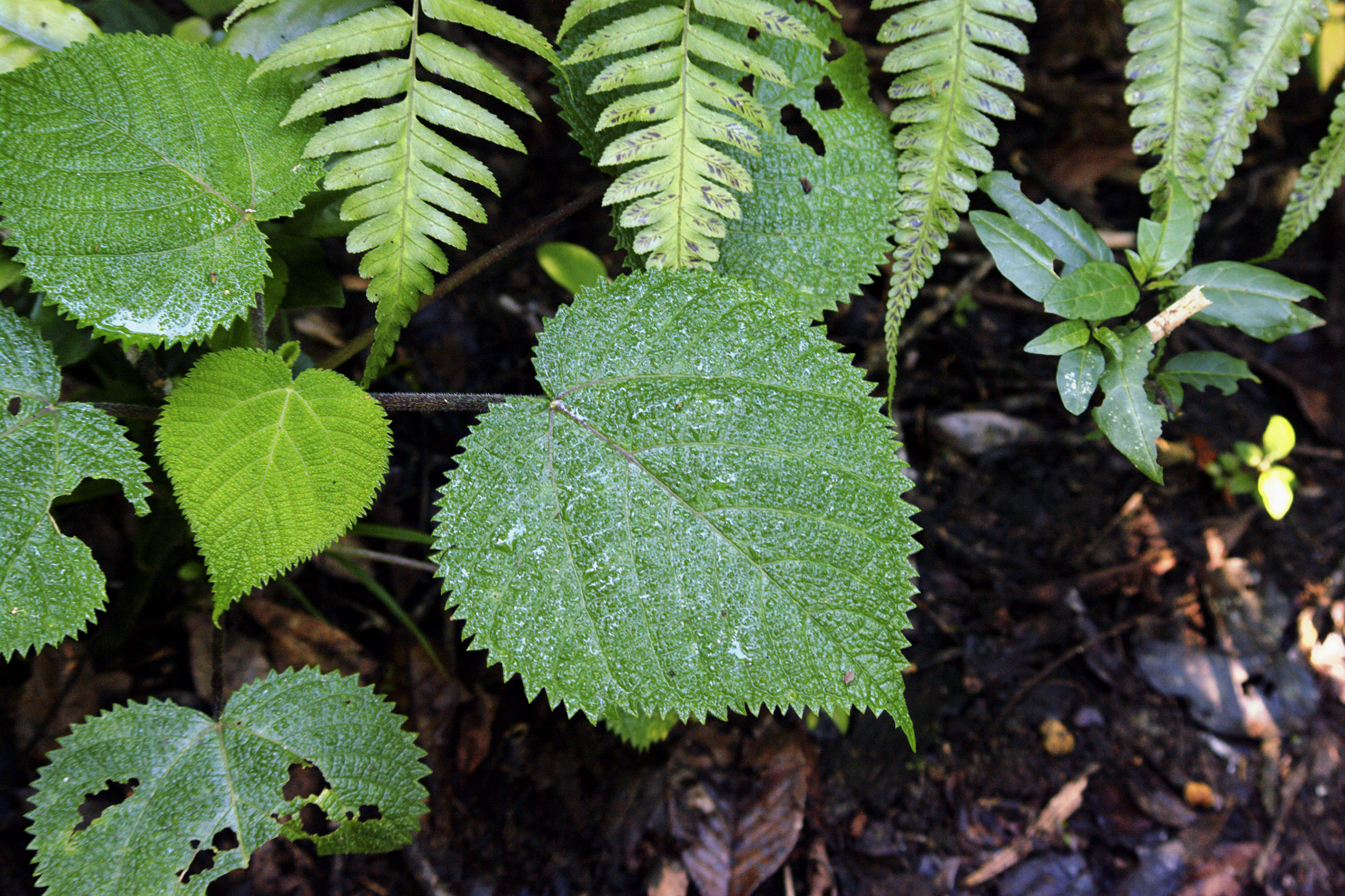Don't Grasp These Nettles
We all have been stung by a stinging nettle (Urtica dioica), cursing the damned plant. However, the ordinary nettle that grows in your backyard or anywhere where there’s a lot of nitrogen, is no match for some of the most dangerous plants around.
Who would have ever guessed that the most dangerous of them comes from Australia!
Gympie-gympie, formally known as Dendrocnide moroides, or the stinging bush, is also part of the nettle (Urticaceae) family and can be found in the rainforests of northeastern Australia and Indonesia. Even the slightest contact with any part of this 1.5-3 meters tall bush causes intense pain and an acid burn-like sensation that can last from several days to months. The hairs of the plant that contain the chemicals responsible for the pain are so tiny that they’re virtually impossible to remove completely. After the initial pain fades away, the affected area becomes sensitive to cold and prone to electric shock-like feelings even for years after the sting. Just like the nettle, gympie is covered with microscopic silica-tipped hairs filled with chemicals (mostly histamine) that, once stuck, excite nerves in the rubbed area, causing pain.
Nat Geo's staff are probably paid well enough to actually try and touch the plant.
The plant is known to have caused even fatal injuries to humans. A rumour has it that an unlucky officer shot himself several days after mistaking a leaf of this plant for one suitable for "toilet purposes". Nasty stuff! No wonder another common name for the plant is ‘the suicide plant’.
Its close relative, D. excelsa, also known as gimpi gimpi or the giant stinging tree, has a less painful sting, but the pain it causes can also last for several months, and researchers, such as Dr. Marina Hurley, are only able to study the plant using heavy welding gloves. It is, however, much larger than the former species – it can grow to be 40 meters tall, measuring up to 6 meters in diameter at the base. Now that’s a nettle you not only shouldn’t but also couldn’t grasp. The collected leaves of Dendrocnide plants stored in herbaria can still sting you even after a century. Interestingly, native Australian mammals can even eat the plant without feeling any of its effects, but the plant kills horses, dogs and possibly other animals that have been introduced to Australia by humans.

Detail of the Gympie-gympie's leaf. Credit: Willem van Aken, CSIRO
You don’t have to wander off far from Australia to find yet another vicious species of the nettle family which can cause acute neuropathy. The tree nettle, ongaonga or Urtica ferox, found on the forest margins of New Zealand lowlands, is peculiar among other species of the genus Urtica because of its woody stem, which basically changes it into a tree version of the common stinging nettle. It can grow to be over 4 meters tall. According to a (brave) radio host who keeps the plant in his backyard, one must get stung a lot for the pain to be fatal. There has been at least one such event.
The unfortunate case was that of a lightly clothed hunter wandering into a thick patch of tree nettles. After being stung, difficulty in walking and breathing occurred first, followed by losing sight and eventually death caused by a nervous system shutdown. Other non-lethal yet painful symptoms can be numbness, cramps and extreme fatigue.
No matter how annoying the common nettle stings are, it is an extremely important plant in medical research, found to be effective in green silver nanoparticle synthesis or in silencing allergic responses and other inflammations, such as rheumatic arthritis.
Also, these plants are very important in the life of some insects. In the UK alone, the common nettle supports over 40 species of insects, most notably the larvae of the peacock butterfly (Aglais io) and small tortoiseshell (Aglais urticae, which is even named after the nettle). The more dangerous cousin of the common nettle, the ongaonga is also significant in the life cycle of butterflies. New Zealand red admiral butterflies (Vanessa gonerilla) fold the leaves of the tree nettle into protective tents where they undergo metamorphosis.
Red admiral butterfly (Vanessa gonerilla) larva in its tree nettle tent. Credit: Tony Willis

Photo credit: Rainer Wunderlich
| Common name: | Gympie-gympie |
| Scientific name: | Dendrocnide moroides |
| Clade: | Angiospermae |
| Order: | Rosales |
| Family: | Urticaceae |
| Scientific reading: |

Photo credit: Rainer Wunderlich
| Common name: | Giant stinging tree |
| Scientific name: | Dendrocnide excelsa |
| Clade: | Angiospermae |
| Order: | Rosales |
| Family: | Urticaceae |
| Scientific reading: |

Photo credit: Charles J Sharp
| Common name: | Peacock butterfly |
| Scientific name: | Aglais io |
| Phylum: | Arthropoda |
| Class: | Insecta |
| Order: | Lepidoptera |
| Family: | Nymphalidae |
| Scientific reading: |

Photo credit: Jörg Hempel
| Common name: | Small turtleshell |
| Scientific name: | Aglais urticae |
| Phylum: | Arthropoda |
| Class: | Insecta |
| Order: | Lepidoptera |
| Family: | Nymphalidae |
| Scientific reading: |

Photo credit: Tony Willis
| Common name: | New Zealand Red Admiral |
| Scientific name: | Vanessa gonerilla |
| Phylum: | Arthropoda |
| Class: | Insecta |
| Order: | Lepidoptera |
| Family: | Nymphalidae |
| Scientific reading: |

